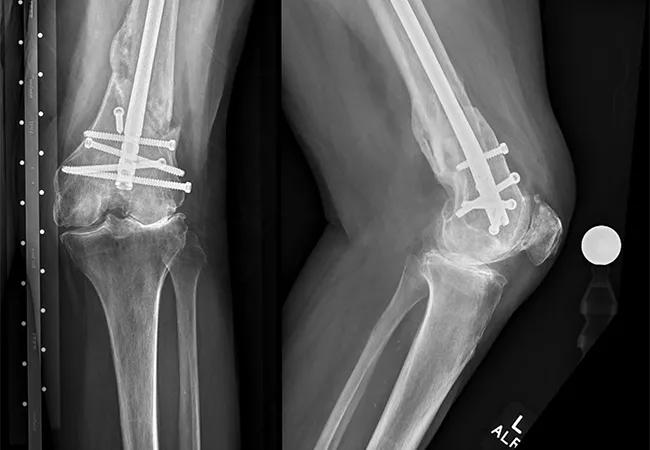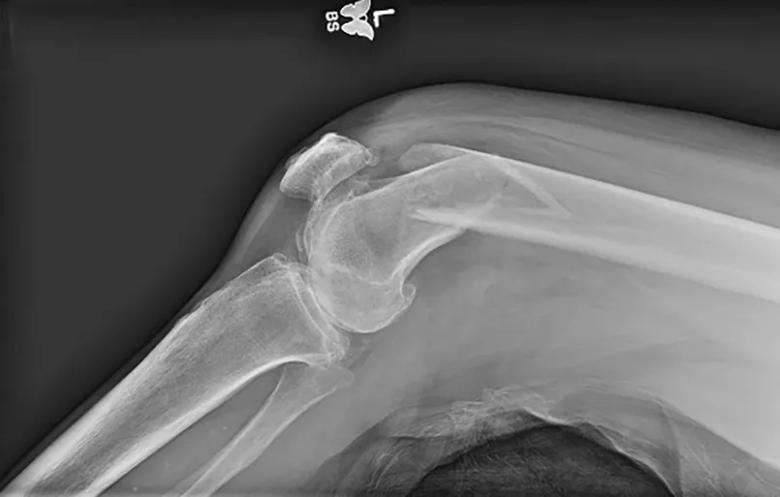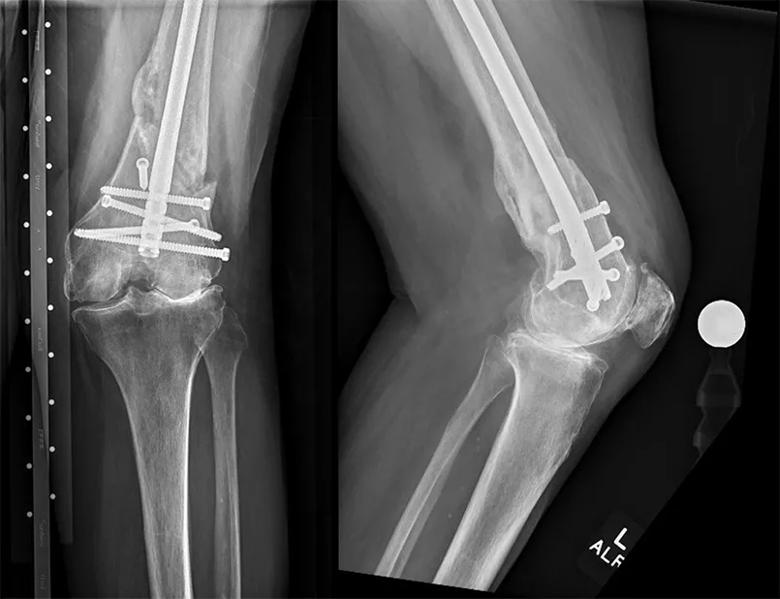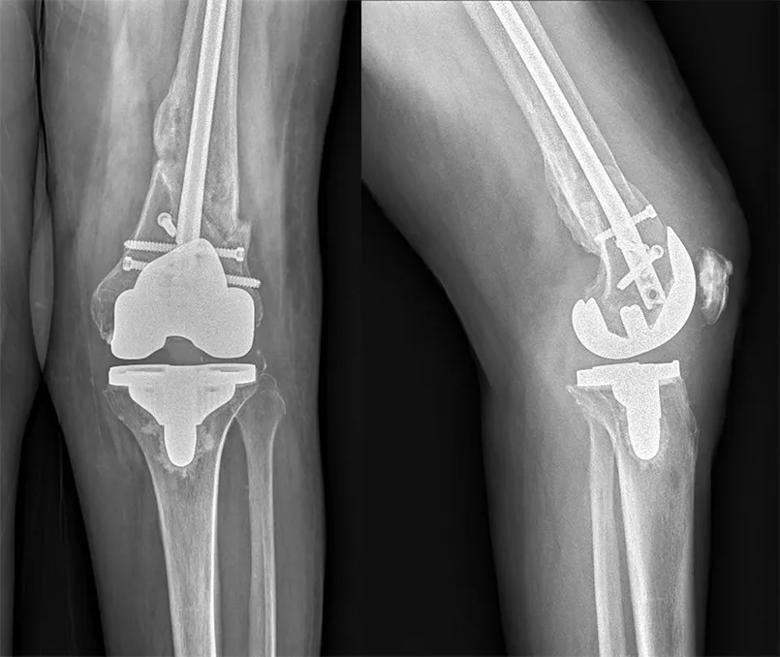Robot assistance turns two-stage surgery into a single procedure

Following complex fracture of her distal femur, an active 73-year-old woman was treated with a retrograde femoral nail at a non-Cleveland Clinic hospital. Although the fracture healed, the patient’s preexisting arthritis of the knee worsened, and she developed a severe deformity with significant functional limitations. The patient had a 10-degree valgus deformity and a 15-degree flexion contracture, with preoperative flexion of only 100 degrees.
Advertisement
Cleveland Clinic is a non-profit academic medical center. Advertising on our site helps support our mission. We do not endorse non-Cleveland Clinic products or services. Policy


After exhausting the conservative treatments, the patient was referred to Cleveland Clinic orthopaedic surgeon Peter Surace, MD, for complex knee replacement surgery.
Conventionally, post-traumatic knee replacement is done in two stages. An initial surgery is done to remove the nail. Then, after the patient heals, a second surgery is done to replace the knee joint. In some cases, the nail is removed and the knee replacement is performed in one surgical setting, which increases operative time and can increase risks to the patient.
“There are all kinds of risks involved,” says Dr. Surace. “You may be taking out a nail that has been there for some time, where there used to be a broken bone, and that can reintroduce risk of fracture. Then you’re putting in a total knee without a nail there to protect that fragile bone, and that’s a big deal.”
Removing the previous retrograde nail isn’t always easy, he adds. Implants can become incarcerated in the bone, and the added operative time to remove these implants increases many risks, including infection.
However, in this case, Dr. Surace was able to perform the surgery robotically, completing the replacement in a single surgery without removing the previous nail. By using robotic preoperative planning, implants were positioned around the retrograde nail. Furthermore, the use of a robotic arm instead of conventional cutting jigs ensured that the nail would not be in the way for any aspect of the surgery.
The single efficient surgery also was important for minimizing recovery time, Dr. Surace noted, acknowledging the patient’s enjoyment of dancing and other physical activities.
Advertisement
“I think it makes a big difference for the patient — from infection, recovery and mental health standpoints — knowing that it’s going to be only one surgery instead of two and knowing that risks involved with the nail removal can be completely avoided,” he says.
According to Dr. Surace, a CT scan before robot-assisted post-traumatic knee replacement is necessary to confirm that the fracture has fully healed and to ensure that it is possible to do the replacement without removing the nail.
“Before surgery, we can know definitively whether or not we will encounter the nail, how to position the implants ideally for the patient’s deformity while being mindful of this old hardware, and how to do everything in one surgery,” he says. “If the CT scan reveals that there is no avoiding the old nail, we can begin to counsel the patient on next steps. Basically, this technology allows us to fully understand what will be possible ahead of time and thus have great communication with the patient about what to expect.”
A CT scan also can aid in preoperative planning. In this case, Dr. Surace used the scan to plan the locations of the cuts and implant, to identify which screws to remove, and to determine how to maneuver around the remaining larger hardware, the femoral nail itself.

Surgery was successful, and the patient’s postoperative course and recovery were uneventful. The patient was discharged home successfully. Despite the added complexity of this case, she did not require discharge to a rehab facility. Three months out from surgery, she reports minimal discomfort. She continues to work toward her goals, which include dancing again.
Advertisement

Dr. Surace estimates that 95% of the knee replacements he performs are done robotically. He says physicians should consider a robotic approach especially for patients with complex, post-traumatic injuries and deformity.
“While there’s some evidence of improved outcomes and accuracy after basic robotic knee replacement surgery, it’s too early to make substantial claims,” he says. “However, for someone like the patient in this case, with a large deformity and preexisting hardware that we’re trying to avoid, I think robotic surgery makes a clear and undeniable difference.”
Advertisement
Advertisement

Self-care may be just as effective for some patients

Most return to the same sport at the same level of intensity

Largest cohorts to date reveal low rates of major complications

More report a clinically meaningful change in function at 90 days compared to patients with lower BMI

Patient climbs Mount Kilimanjaro 8 months after surgery

Sports medicine pioneer John Bergfeld, MD, shares how orthopaedics has changed since doing his first ACL repair in 1970

How to diagnose and treat crystalline arthropathy after knee replacement

Special glasses allowed surgeon to see 3D models and anatomic data superimposed on surgical field